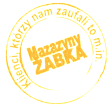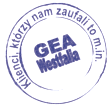Safety in working at height - IRATA certification
Why get a heights licence?
In order to start a career in working at heights, the right health aptitude and approach to relevant courses are required. It is essential to acquire knowledge, skills and hazard awareness, which can be achieved through professional training. Industrial mountaineering training courses, especially those certified by IRATA, comprehensively prepare you to work in demanding conditions. They teach not only the basics of rope techniques, but also the use of specialised belay equipment. This will give you an internationally recognised qualification and the confidence to perform complex tasks at great heights.
Global labour standard - IRATA
The International Industrial Rope Access Technicians Association sets the standard for the rope access industry. IRATA promotes the use of the two-rope system, which increases the safety of workers at height. In addition, it has developed rules for work organisation, climbing and analyses incidents and accidents to create safety procedures based on these. The results of this work are published on the ICOP website.
Today, more than 130,000 technicians hold the IRATA qualification, which is accepted by employers worldwide. The validity of the document is three years, after which a refresher is required - and you can also upgrade your certification level. This allows rope access specialists to update their skills. They have the opportunity for professional development in the industry. Such a system encourages continuous professional development, emphasising the importance of training and improving the skills of technicians working at height.
The IRATA certification includes three levels that delineate specialisation and responsibility in rope access:
- level 1 (trainee technician),
- level 2 (specialist),
- Level 3 (supervisory).
Each successive level of IRATA certification increases the responsibilities and sophistication of working at height. Reaching the highest, third level, requires completion of the earlier stages. The final certification allows for supervision of the team's work and full responsibility for the team's safety.
IRATA certification levels
Completion of the first stage of training allows you to carry out rope access work at a height of more than 3m under the close supervision of a level three specialist. The course covers the basics of theory and practice needed to work at height using rope access. It consists of theoretical lectures on equipment, knot tying and regulations and standards for working at height. Participants also learn the principles of forces in rope systems and during a fall. Practical classes cover the construction of pitches, rope techniques, rope assembly and the basics of rescue.
Second level
A minimum of one year's experience and 1,000 hours at level one is required to gain the next level of training. The specialist has full technical knowledge and takes part in rescue operations. The course includes lectures on equipment, knots, legal standards and forces in rope systems during falls. Practical classes develop skills in position construction, advanced rope techniques, transport systems, climbing and autoratation.
Third step of IRATA certification
The next level of the course requires 1,000 hours of work and 12 months of experience at level two, providing complete theoretical and practical preparation for advanced work at height. This stage includes the complete range of theoretical knowledge and practical skills required to perform versatile and complex rope work tasks. The training will include the study of rope transport and autoracking techniques as well as team rescue. This stage includes a complete knowledge of equipment, belay rules, knots and legal standards. In the practical part, participants develop skills in the construction of posts and anchor points, working with rope systems, climbing and rescue techniques.
Why invest in rope access courses?
In addition to meeting the formal requirements to become certified in working at height, it is important to acquire the necessary knowledge and skills, which can be achieved through professional courses such as those with IRATA certification. This programme teaches rope techniques and the use of belay equipment, which translates into confidence in challenging conditions. The IRATA certificate, which is recognised globally, allows for continuous professional development, and the system of three levels of certification promotes increased responsibility and competence in the field.
Questions and answers
Why get a heights licence?
Altitude certification is key to working safely in challenging conditions at great heights. Obtaining the right knowledge and skills at the various stages of certification not only increases your efficiency, but also your safety when working at heights
What are the benefits of completing an IRATA-certified course?
The IRATA-certified course prepares you for complex tasks, teaches you rope techniques and the use of belay equipment. It also enables you to develop your career in an international context, as you will receive a qualification recognised abroad.
What are the IRATA certification levels?
The IRATA certification consists of three levels: level 1 (trainee technician), level 2 (specialist) and level 3 (supervisor). Each level develops different skills, enabling progressive professional development from entry-level worker to team leader.
How does IRATA affect safety when working at height?
IRATA standardises rope techniques and creates safety procedures. By analysing incidents and promoting effective practices. By doing so, it not only supports the improvement of workers' skills, but also raises awareness of safety issues at all levels of working at heights.

































